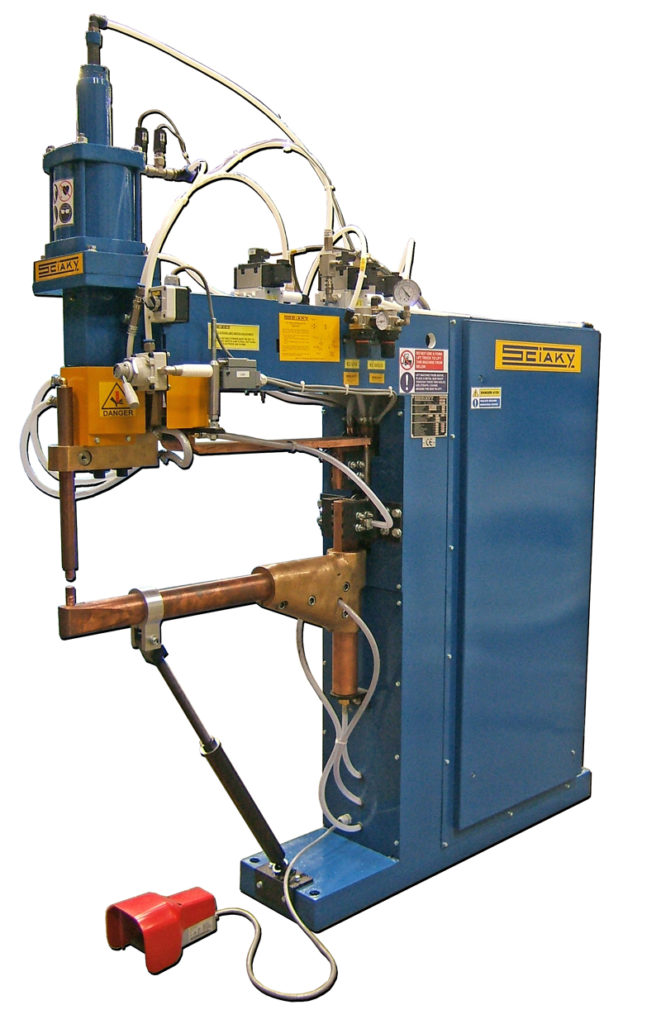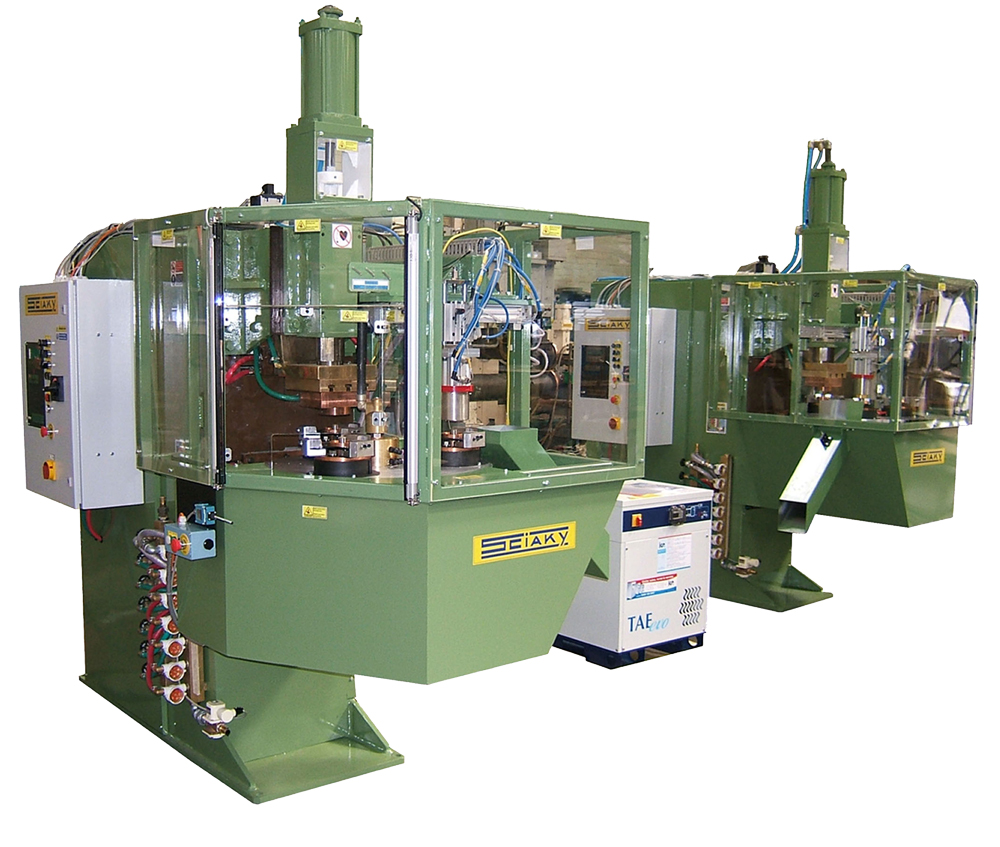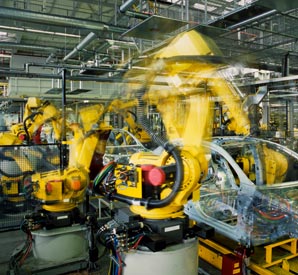
Automotive Welding
A typical car body can have upwards of 3,000 resistance spot and projection welds, some on sub-assemblies and some in final body assembly; in the early days large quantities of standard pedestal and portable spot and seam welders were used, each requiring an operator.
Increase in production brought a need for special machines which could make a number of welds on an assembly, using a single operator; Sciaky were at the forefront in developing multi-spot welding machines, often with automatic loading/unloading and transfer mechanisms
Given a problem of how to produce a part or assembly, we analyse the requirements – material combinations, geometry, production rate etc and we can propose the most appropriate and economic solution to the end user. We are accustomed to working to specific client requirements – standards, working practices, preferred machine components etc. And we guarantee confidentiality.

Multi Welders
For greater productivity, several resistance spotweld or projection heads can be mounted in one frame, at various angles if necessary, to produce a weld pattern that is mainly limited by the part geometry. Loading/unloading of component parts can be manual or automatic and automatic transfer can be incorporated.
Welding processes can be single-phase, mid-frequency and direct or indirect as appropriate.

Robot Cells
The changing forms of body shape often called for robotised solutions; there are two main choices for resistance welding:
Either the robot is used as a manipulator to pick up sub-assemblies and pass them through one or several resistance spot welding stations (and maybe other processes) before unloading completed parts.
Or, where parts are loaded into (heavy) fixtures and the robot manipulates an on-board spot welding gun around the part.
Sciaky have supplied many variations of these cells to Tier 1 and Tier 2 suppliers, each cell having its own computerised or PLC control system and full safety guarding.
In many cases, a robot cell will have included ancillary operations like automatic electrode dressing and changing to minimise the need for intervention. Cells are also often grouped together, passing an assembly from one cell to another automatically.
